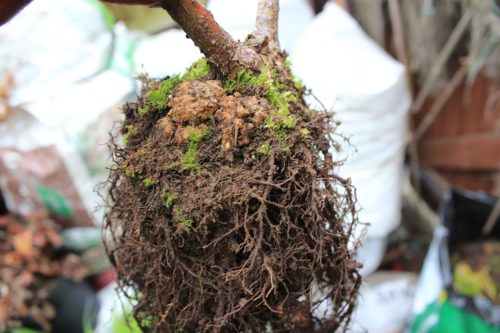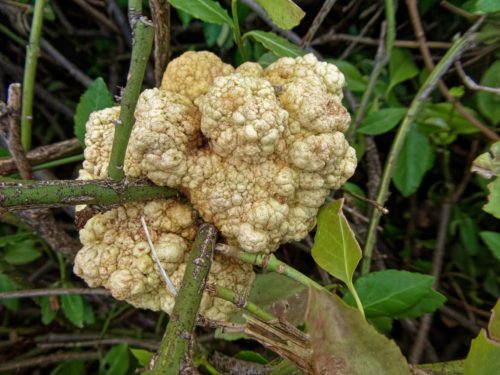Crown gall disease, this bacterium lives underground and infects a plant through a wound.

Crown gall disease (Rhizobium radiobacter, formerly: Agrobacterium tumefaciens). The bacterium lives underground and infects a plant through a wound. In infected plants and shrubs, the bacteria multiply and induce plant cells to divide indefinitely. Below ground, nodules or galls (actually tumors) form on the roots. In shrubs, the nodules lignify; in perennials, the nodules rot away in the fall. Above-ground tumors can reach a significant size.
Affected perennials, trees and shrubs show delayed growth. The leaves also remain smaller than their peers.
The bacteria hibernate underground but can also survive in the nodules.
Wait more than three years before the same plant, shrub or tree can be planted in that location again.
Where to find
- Ornamental garden
- Fruit trees
Control
Once affected, recovery is no longer possible. Remove infested plants and shrubs.
Prevention
Try to avoid damage to roots when planting.
Clean pruning tools thoroughly after use.
Protect newly grafted grafts.

